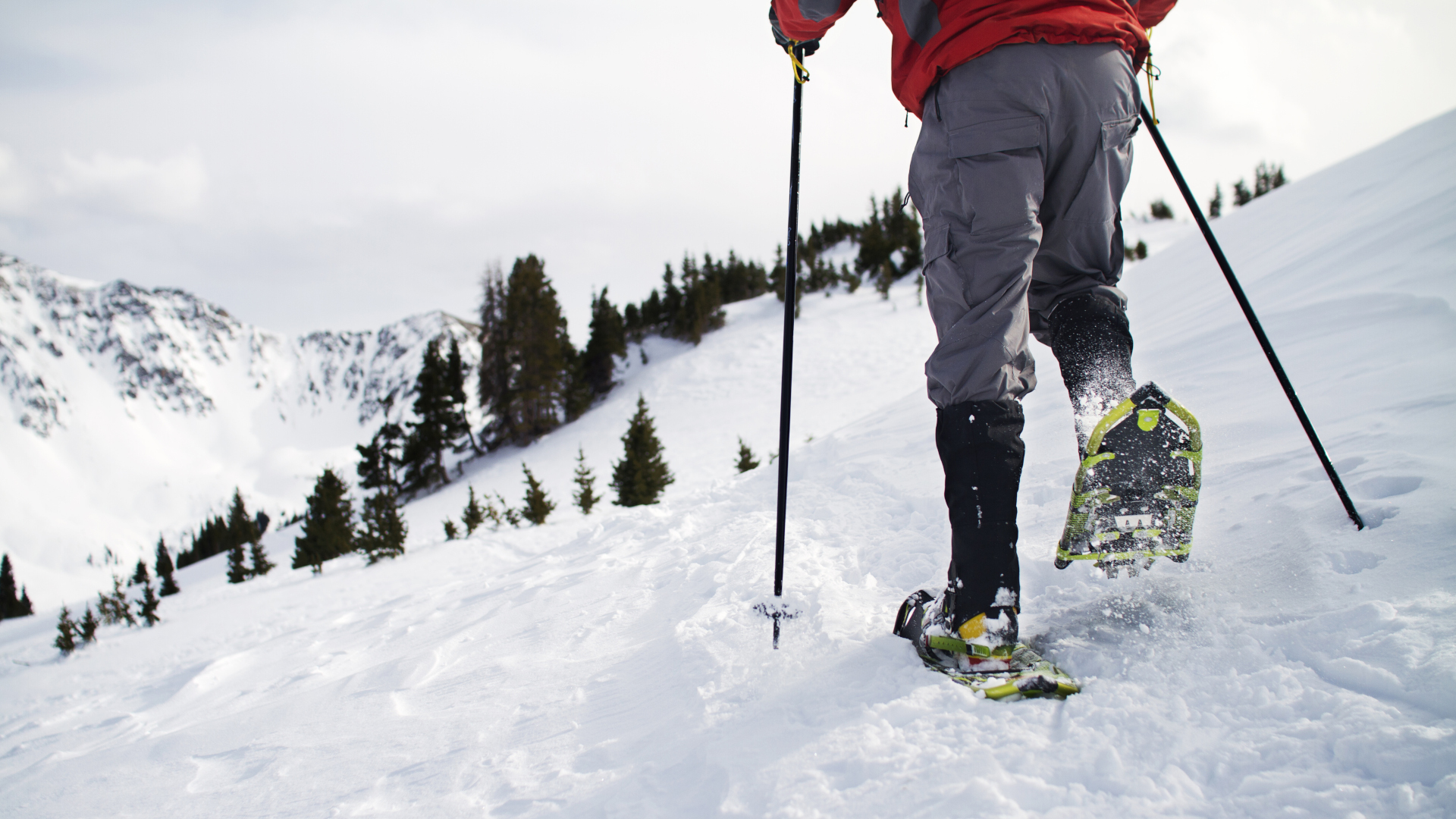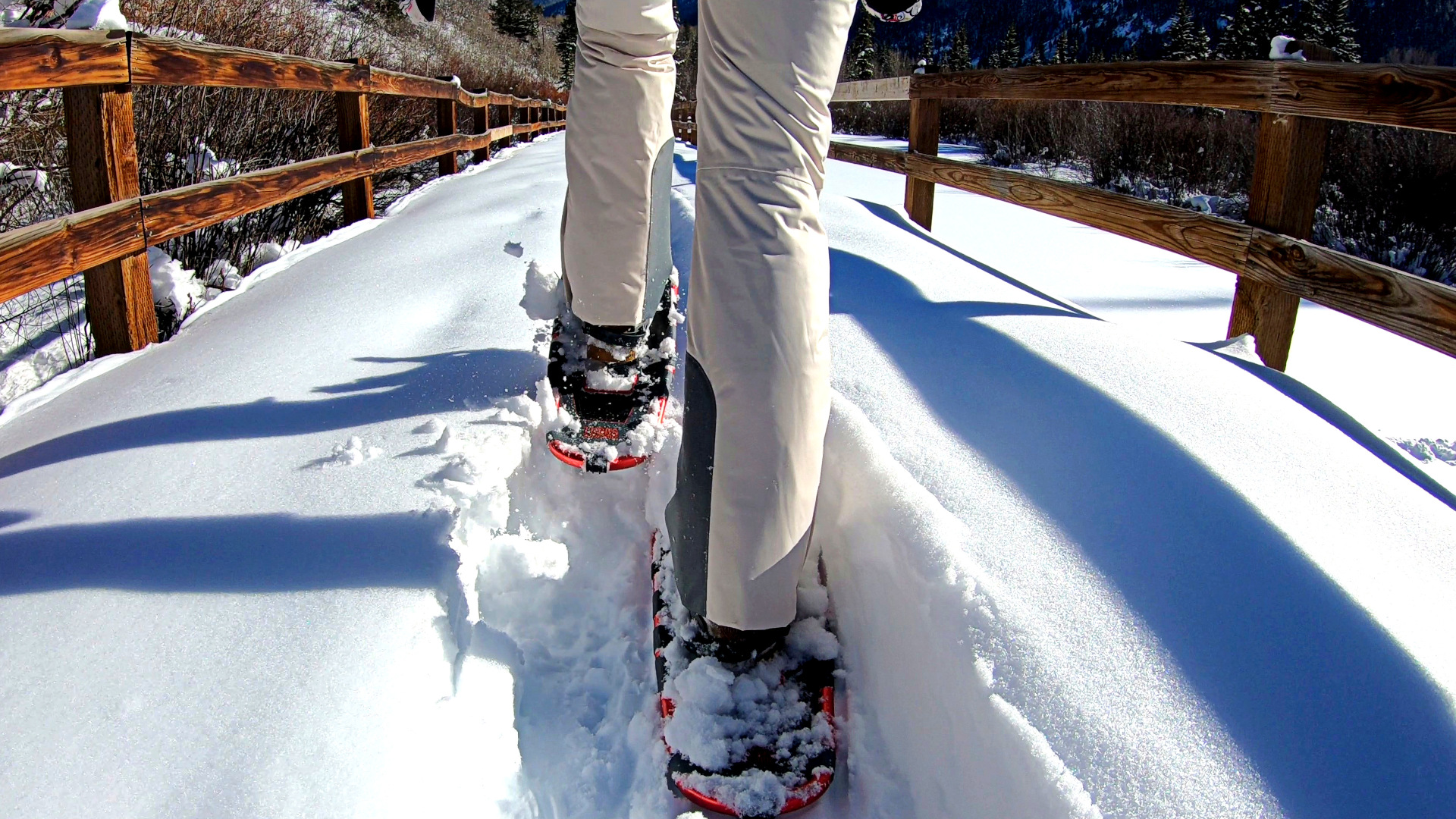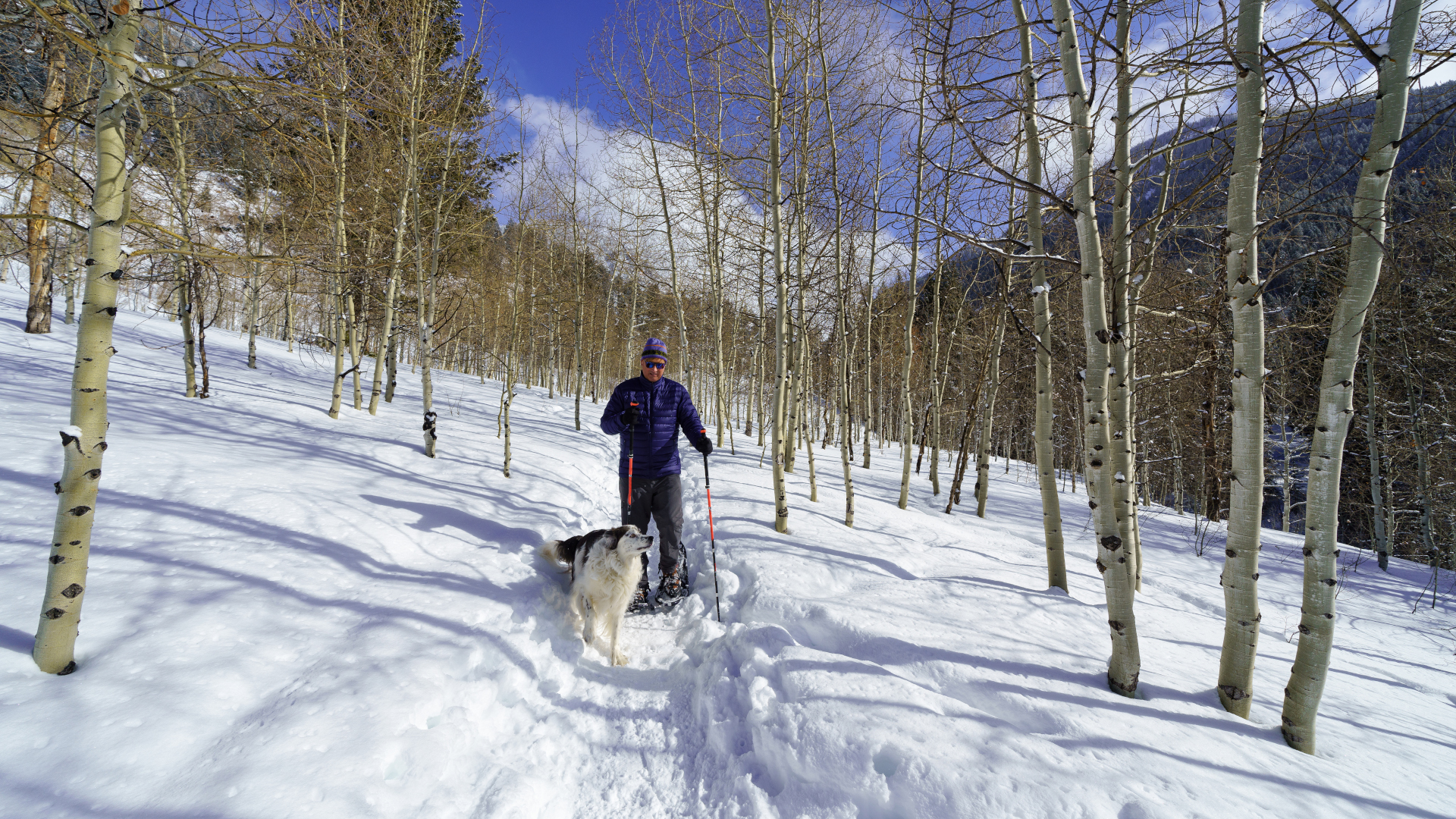Is snowshoeing hard? Why it’s a better workout than hiking
Is snowshoeing hard? If you’re looking to give your brain a rest and your body a workout, you’ll want to give it a go this winter

Is snowshoeing hard? There’s something about trekking through deep snow in strap-on yeti shoes that makes it seem mellow compared to other winter sports. Maybe it’s because you grew up seeing those tennis racket-style snowshoes adorning the walls of ski lodges, and you subconsciously associate it with hanging out and drinking hot chocolate. Or perhaps it’s the pastoral imagery of wholesome-looking folks tramping across the Vermont landscape that makes you think, “snowshoeing is for old people”. Certainly it lacks the technical gear and momentum of sports like skiing and snowboarding and if you’re a bit of an adrenaline junkie, you could easily have overlooked snowshoeing as a viable option for snow season. But make no mistake, snowshoeing is probably not as easy as you think.

Is snowshoeing hard?
Assuming that you mean, “does snowshoeing involve a lot of physical exertion?” and not, “does snowshoeing require a great deal of skill and expertise?” then yes, snowshoeing is definitely hard. In fact, if until now, your experience of winter sports has involved riding a chairlift then zooming downhill, you might be astounded by how difficult snowshoeing really is, especially in a high alpine area where steep terrain is the norm. Don’t believe us? Read on to see how it compares to other activities like hiking and skiing.

Snowshoeing vs hiking
The easiest way to understand how snowshoeing can be so demanding is to compare it to hiking. When you’re hiking, you can walk with a normal gait on the flat stuff and on steeper inclines, you rely on your leg muscles like your quads and glutes a bit more to push down with each step. You could use trekking poles and get your arms involved to make climbing easier. A sturdy pair of hiking boots can definitely add a pound or two to the weight of your feet (1.5lb per boot if you’re wearing a pair of Keen Karraig’s) but many are lightweight these days and the shape of your boots or hiking shoes don’t affect your gait. Now no one is saying that hiking is easy, just that it’s a fairly natural thing to do, made difficult by the incline of the hill you're on and the distance you go.
Now imagine that you’re hiking in deep snow, wearing snowshoes. Yes, the snowshoes provide flotation, but with each step you still sink into the snow a little (especially if yours are slightly too light or small for your body weight). Particularly if you’re breaking trail, even though you’re packing down the snow with each step, what lies ahead of you is untouched – so each time you want to take a step forward, you need to lift your knee up quite a bit higher than you would when you’re hiking in order to clear what’s in front of you. That means your hip flexor muscles need to work quite a bit harder than they normally do even on a hike. Plus even a lightweight pair of snowshoes adds about 2lb to each foot, and remember that’s in addition to your actual shoes, so you’re moving heavier legs.

You've also got to factor in the instability of the snow compared to solid ground. When you place your foot in front of you and lean your weight into it, it shifts a little in the snow, so the smaller muscles in your lower leg, ankle and foot have to work harder than usual to stabilise your knee and ankle, which is why you’ll often have sore ankles after snowshoeing when you wouldn’t after hiking. Then you’ve got the shape of your snowshoes – because a typical pair of snowshoes adds, at minimum, a couple of inches of width to your foot, you may have to change your gait a little to make sure your snowshoes aren’t bashing into each other as you walk. Add a steep hill to all this and you’ll be huffing and puffing before you know it. Even on flat terrain, snowshoeing is hard.
One place, however, where snowshoeing is a bit easier than hiking is on the downhill. Hiking downhill requires your quadriceps to do a lot of eccentric contraction to essentially act as brakes to slow you down. The result is tiring, especially on a prolonged, steep descent. When you’re snowshoeing in deep powder, the terrain provides a really soft landing while the crampons on your snowshoes dig in to act as brakes, so you can actually let momentum take over a little and move downhill in quite an easy fashion, like you’re sliding through the snow. It’s really fun.

Snowshoeing vs skiing
Compared to uphill skiing, snowshoeing provides a similar workout but uses slightly different muscles. Skinning uphill uses a lot of hip flexors and is really hard work, but of course you can just slide each foot uphill rather than lifting your leg each time, which helps compensate for the added weight of boots, bindings and skis. Snowshoeing up the same hill means more quad action. But on the downhill, if you know how to ski, it’s easier and faster to ski down than to snowshoe back down.
All the latest inspiration, tips and guides to help you plan your next Advnture!
When it comes to skill and equipment, however, snowshoeing is easy, making it great for beginners. Even though you walk differently when you’re snowshoeing, you’re still walking, so the learning curve is more of a straight line, and most snowshoes are pretty easy to figure out – they come labelled as right and left, you pull them on over your shoes or boots and tighten them using simple straps. And of course, there’s no need to figure out how to load and unload a chairlift or how to turn on skis. So, if you’re looking to give your brain a rest and your body a workout, why not try snowshoeing this winter?
- Best hiking boots: for warmth, comfort, and stability
Julia Clarke is a staff writer for Advnture.com and the author of the book Restorative Yoga for Beginners. She loves to explore mountains on foot, bike, skis and belay and then recover on the the yoga mat. Julia graduated with a degree in journalism in 2004 and spent eight years working as a radio presenter in Kansas City, Vermont, Boston and New York City before discovering the joys of the Rocky Mountains. She then detoured west to Colorado and enjoyed 11 years teaching yoga in Vail before returning to her hometown of Glasgow, Scotland in 2020 to focus on family and writing.

